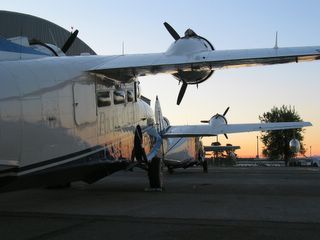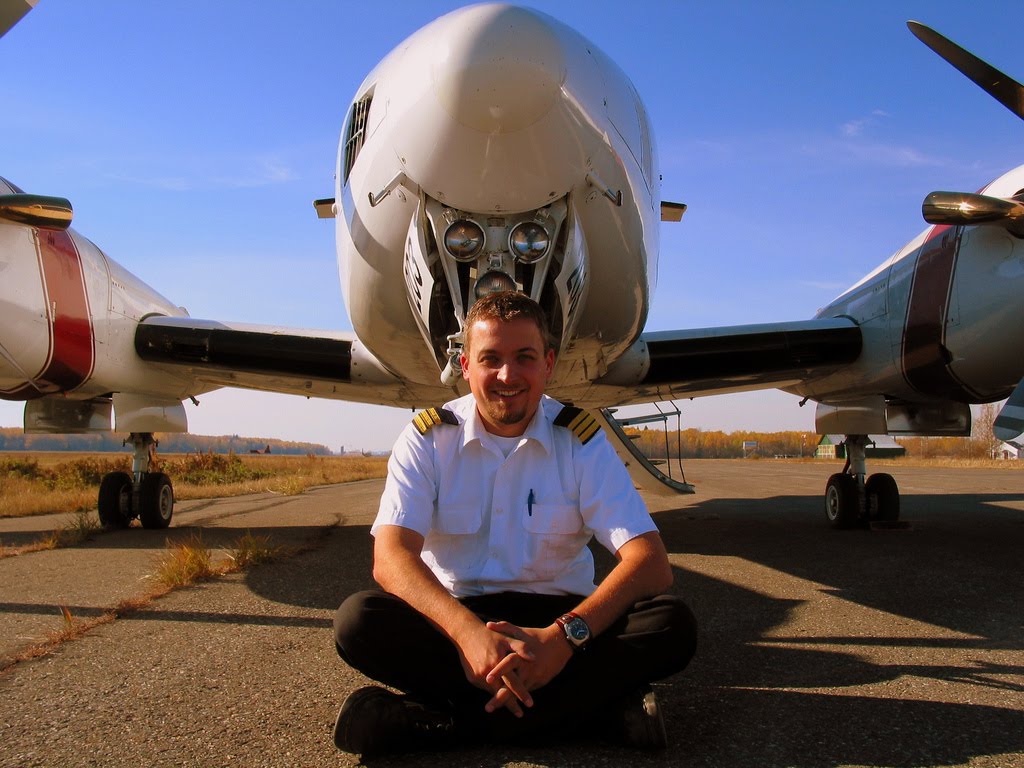Remembering the Goal
One of the quotes you're likely to hear when doing your training for your pilot's License is
"It's better to be on the ground, wishing you were in the air, then in air, wishing you were on the ground."Basically they're saying if there is a chance you're going to run into really piss poor weather, you should probably just stay on the ground. Most commercial airplanes can fly in almost any sort of weather. Modern airliners are equipped with radar to steer them away from storms, devices to help them rid the airplane of ice, and all sorts of instruments and amazing toys to help the crew navigate without reference to the ground. However, many smaller airplanes like the popular Cessna 172 are much more limited in regards to the weather they can fly in. Even if the aircraft is capable, the pilot requires training and a Transport Canada ride to fly on instruments alone.
Many pilots are very mission oriented. Whenever we leave an airport, we have a place where we are to arrive and do everything we can to get there. However, when flying around in smaller airplanes, navigating by reference to the ground, mother nature can really have a way of making a fool of the best laid plans. Each time I've run into weather it's a different scenario and just how far I went was based on a number of things including how well I know the area, what kind of weather I expected @ the destination, and what lies in between. There have been a number of times where I've had to turn around and head back to the airport of departure due to poor weather. One of my very first trips as a commercial pilot was to Oxford House, where I took some Manitoba Hydro personnel to do some repairs. On the return trip back to Thompson we ran into some very low cloud that forced me to turn around back to Oxford House. The Hydro guys were able catch a sched flight back to Thompson in an aircraft capable of the weather. I ended up spending the night at Oxford House General Store and not making it back to Thompson the next day.
There have also been times when I've had to divert to other airports off the route. Pikwitonei was my favorite airport for this as it is only 26 miles from Thompson and when the weather picked up it was a quick trip.
In aviation, such diversion are inevitable. As a pilot I hate telling passengers I can't get them to their destination today, but I would much rather that then scare the crap out of them or put a smoking hole in the ground. The ultimate diversion though would be land the aircraft off airport. I can only think of one time when I felt the weather was deteriorating @ such a rate that I was looking for fields and straight stretches of road on the ground to land the plane (I wasn't actually flying, somebody else was). Lucky for me an airport was nearby and the person flying elected to land there. As the pilot, it must be a hard decision to make when you're faced with putting it down on a highway somewhere. However, although forecasters do a pretty good job with letting us know what to expect when we're flying, sometimes mother nature can catch you off guard and you're forced to make difficult decisions. On Monday, just outside of Hope, BC, near Manning Park, a pilot training for her commercial license did the right thing when she decided to land the 172 she was flying, with two passengers, down on BC Highway #3. Ultimately, our goal as pilots is to get everyone on the ground safely (if we're having a good day, the plane still might be flyable as well :)) I commend the pilot involved with this incident, and I hope she does well with her career.

















